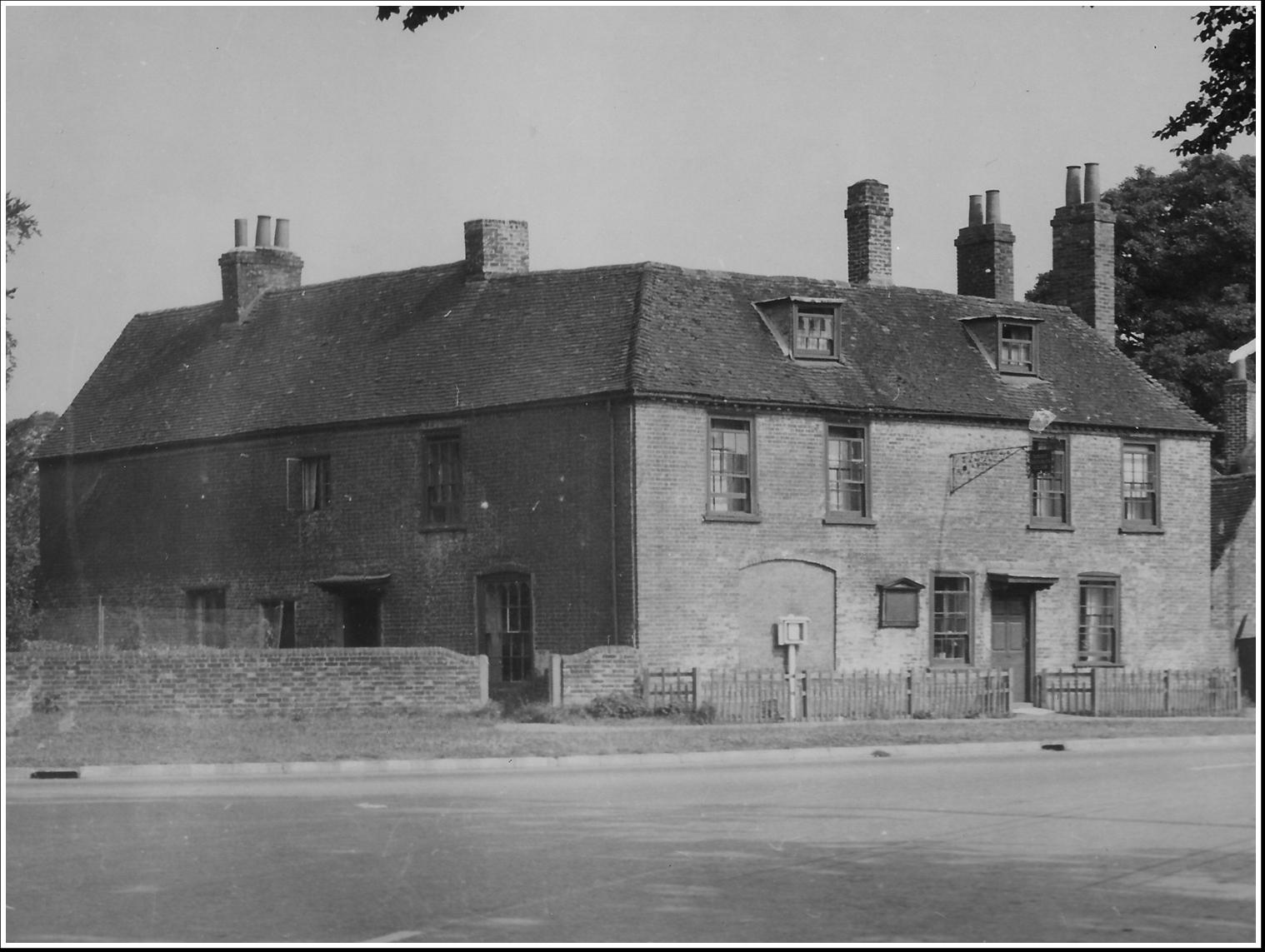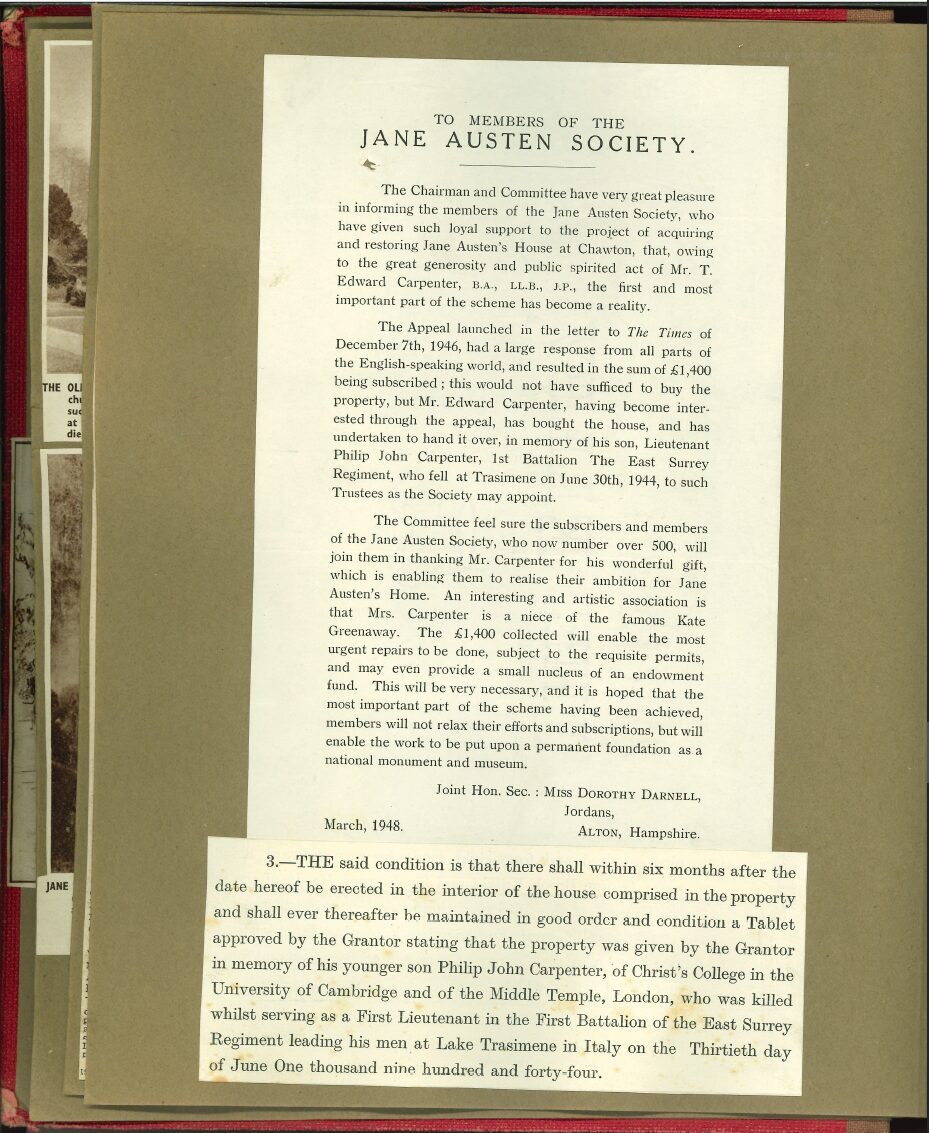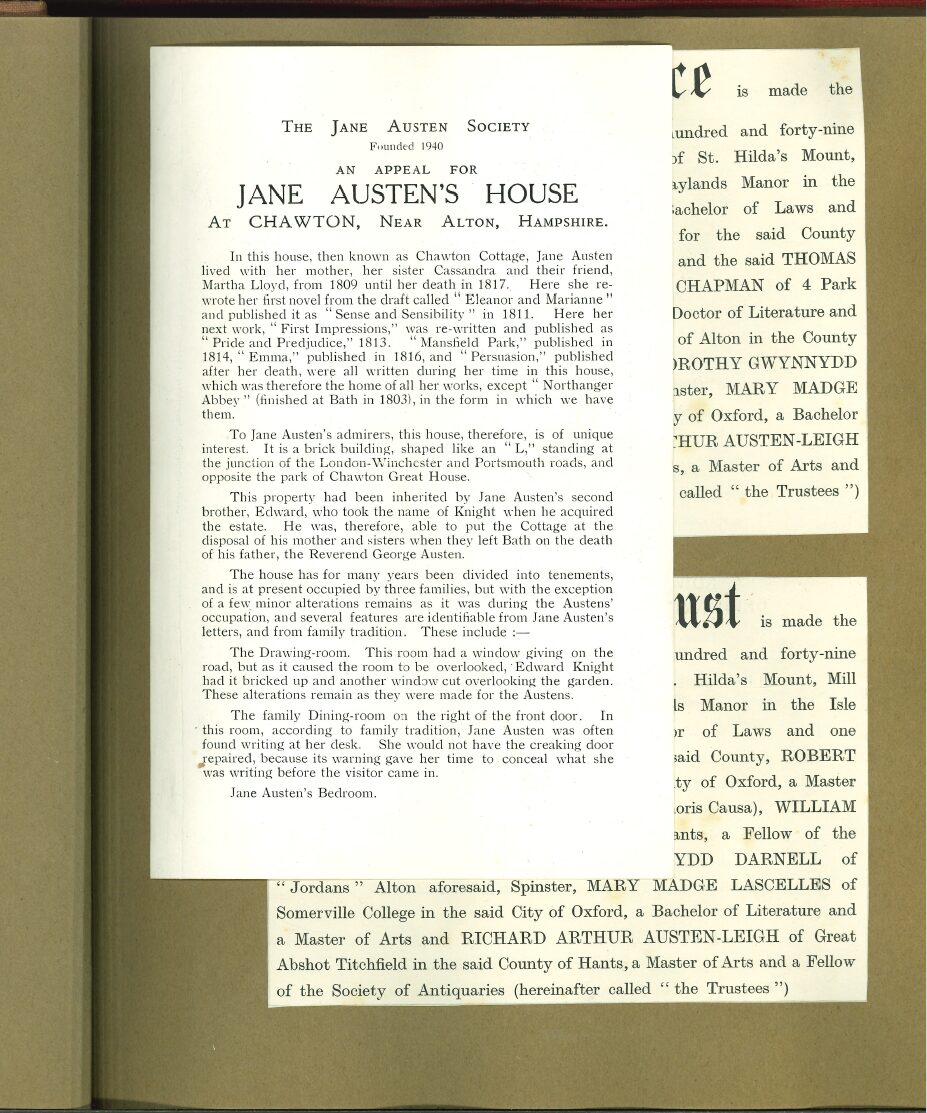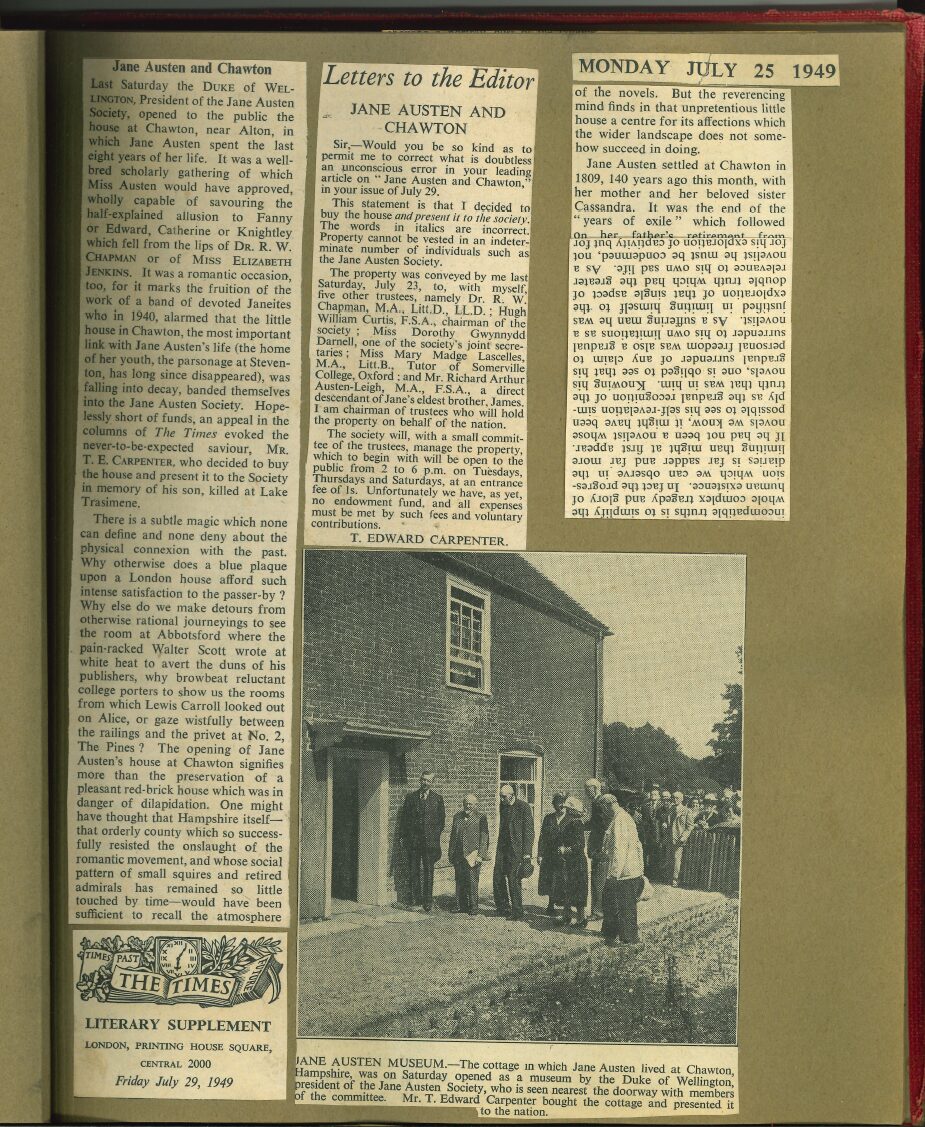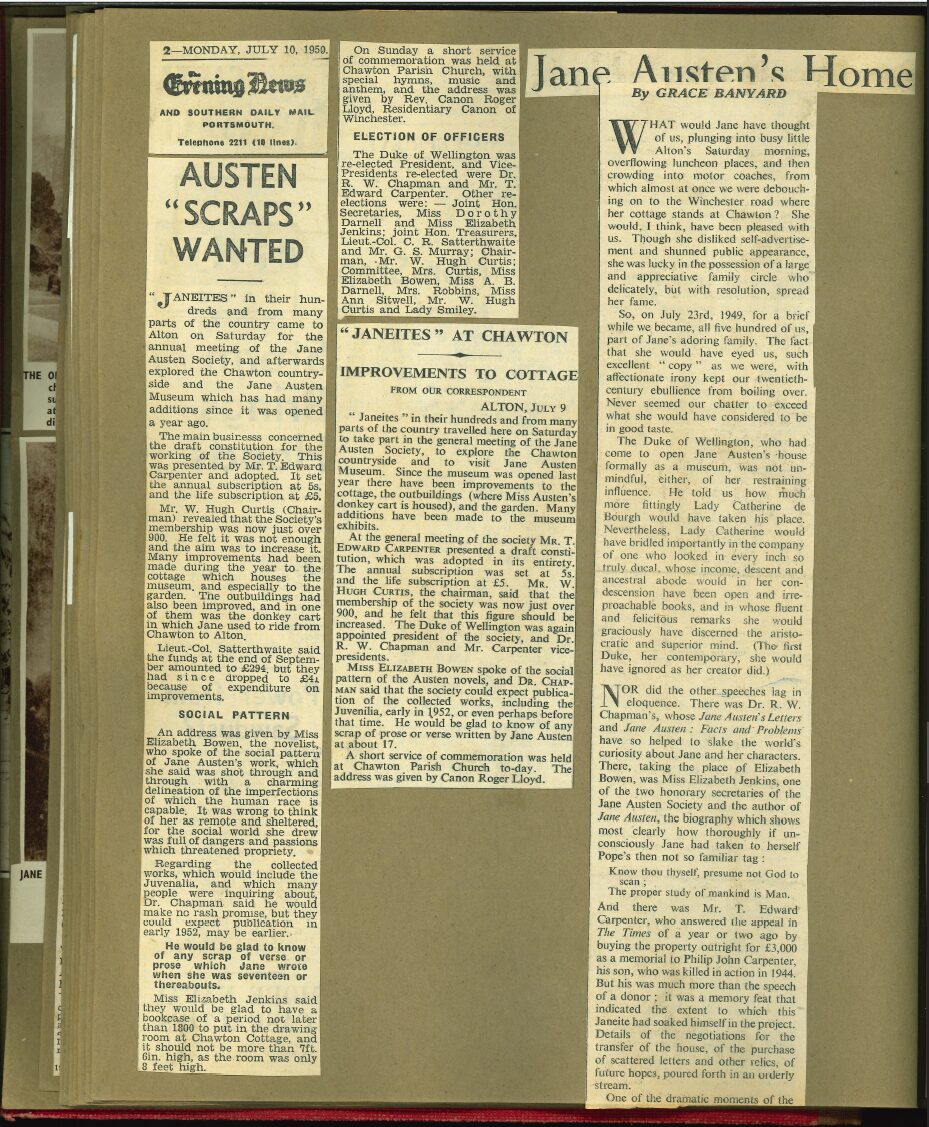Room 4: Jane Austen’s House
‘The aim of the Jane Austen society…is to acquire this house and while keeping it in repair and the main part of it in use as living accommodation, to make those rooms which are definitely associated with Jane Austen accessible to the public…Jane Austen’s House, it is felt, deserves equal care.’ The Jane Austen Society, ‘An Appeal for Jane Austen’s House’, c.1945.‘The society and its work to turn the house into a museum should also be set within the context of World War Two. For example, its founding occurred only weeks before the Dunkirk evacuations. During the conflict, the society grew to nearly three-hundred members, and accumulated £200 in subscriptions, which was then used on repairs to the house. Dorothy Darnell and the society’s words used to describe the ‘rescue work’ on the house echo those of wartime speeches: ‘we were told on all hands that we should never accomplish anything while the war lasted, but we did not agree’.
Elizabeth Jenkins, ‘Introduction’, in Jane Austen Society Collected Reports, 1949-1965, p. ix
Object: T. E. Carpenter’s scrapbook
This scrapbook is archived as ‘T. E. Carpenter’s red scrapbook’.
T. E. Carpenter personally acquired Jane Austen’s House in 1948 and endowed it to the nation as a memorial to his son Phillip Carpenter, who was killed in action in Italy, 1944, aged only 22. Mr Carpenter set up the Jane Austen Memorial Trust to run the house as a museum.
These facsimile pages of T. E. Carpenter’s scrapbook show photographs of the house in the 1940s, as well as some mementos of the formal opening, including the programme and ticket.
Object: Lock of Jane Austen’s hair
On 23 July 1949 the House was formally opened as a museum by the Duke of Wellington. During the ceremony, Mr Carpenter lamented the loss of many Austen artefacts to America, noting with particular sadness that a lock of Jane Austen’s hair had recently been purchased at Sotheby’s by an American.
After his speech, Mrs Alberta Burke from Baltimore Alberta muttered under her breath, “I will give them the damn hair.” She then rose and said very simply, “I am the American who bought Jane’s hair and if the society would like to have it, I shall be glad to make a contribution of the hair.” At that point, the tent in which the meeting was being held almost collapsed.
You have reached the end of this virtual exhibition! We hope you enjoyed it and your interest in/passion for Mansfield Park has been satisfied – or that you are inspired to read it (again)!
Please let us know us on social media using #JaneAustensHouse
And if you’d like to see these objects up close, why not visit us in Chawton?
